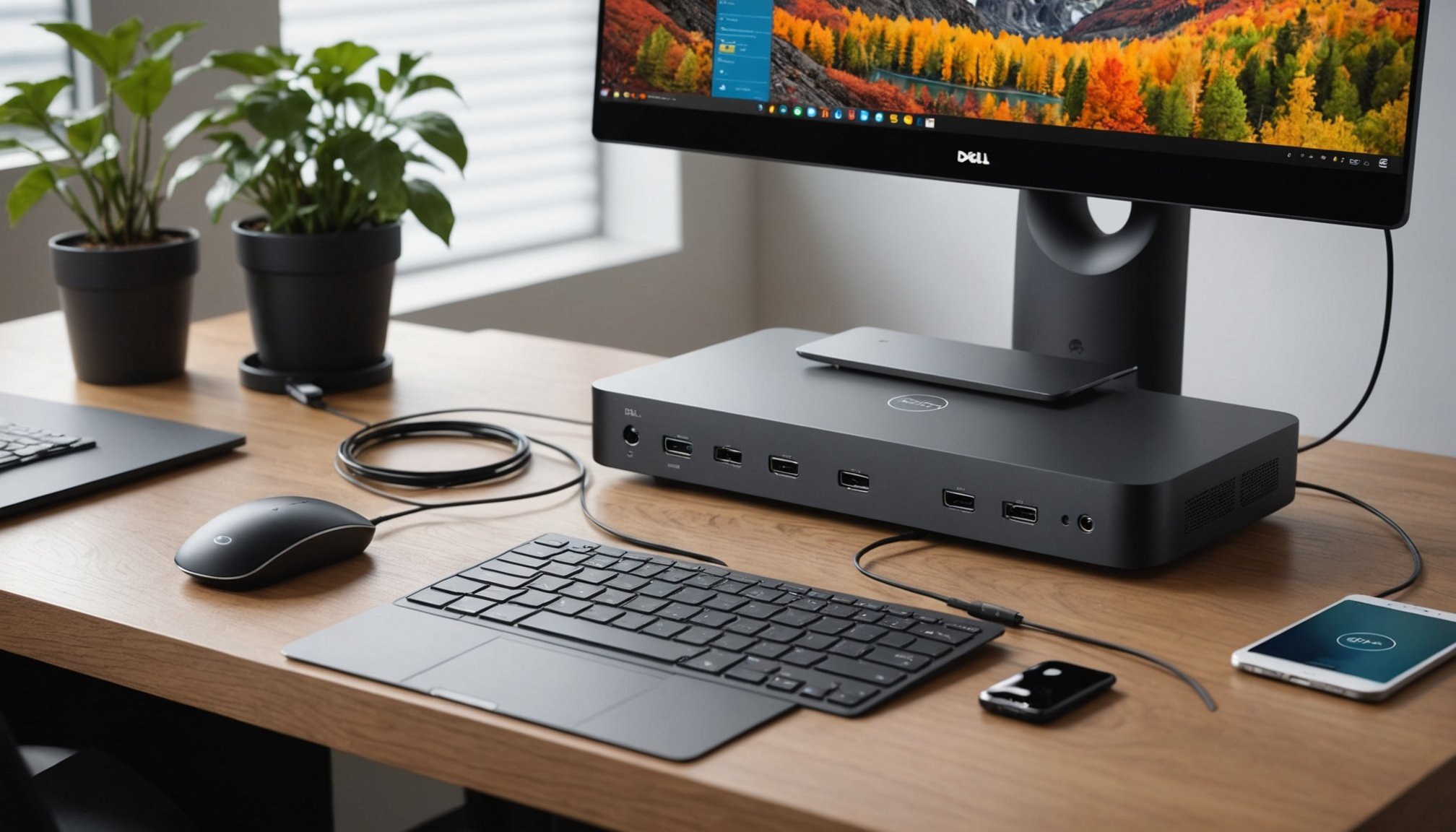Optimizing Your Thunderbolt 3 Dock Setup
Setting up your Thunderbolt 3 dock with a Dell XPS 13 involves several crucial steps, aimed at ensuring seamless connectivity and performance enhancement. Firstly, understanding the connection process is imperative. Begin by identifying the appropriate Thunderbolt port on your laptop, usually marked by a lightning bolt symbol. Firmly insert the dock cable into this port to establish a stable connection.
Updating your software and firmware is equally vital. Ensure your Dell XPS 13’s operating system is up to date, along with any Thunderbolt-specific drivers. These updates enhance compatibility and prevent connectivity issues, laying the foundation for better performance.
Additional reading : Unlocking Windows 10 Security: The Ultimate Step-by-Step Guide to Mastering Two-Factor Authentication with YubiKey!
The physical setup of your dock also plays a significant role. Position the dock in a location that allows for easy access to its ports while maintaining a clutter-free desk environment. This ensures optimal airflow and reduces the potential for overheating, hence boosting performance.
When physically connecting the Thunderbolt 3 dock, it’s advisable to follow a specific configuration:
Also read : Unlocking Secure Remote Access: Build a Trustworthy Raspberry Pi VPN Server for Seamless Connectivity
- Connect power-intensive devices, like external hard drives, first.
- Follow with less demanding peripherals such as keyboards and mice.
Adhering to these steps ensures a smooth Thunderbolt 3 dock setup, enhancing your Dell XPS 13’s connectivity and overall performance.
Troubleshooting Common Thunderbolt 3 Dock Issues
When using a Thunderbolt 3 dock with your Dell XPS 13, encountering connection issues is not uncommon. To effectively resolve these, ensure the dock is firmly connected to the designated port. Sometimes, a simple re-plugging can clear temporary glitches. Regular observations to identify whether issues arise with specific peripherals or constantly help locate the problem source quickly.
Identifying and Resolving Connection Issues
Connection issues often stem from outdated drivers or firmware defects. Begin by verifying if your Dell XPS 13 and Thunderbolt 3 dock drivers are up-to-date. If problems persist, checking the cable integrity is crucial as a defective cable might disrupt connectivity. Testing with a new or verified Thunderbolt cable can eliminate hardware-related worries.
Overcoming Power Delivery Failures
Inadequate power delivery may lead to peripherals lagging or failing to function. Ensure your power settings are adjusted correctly to support high-energy devices. Often, re-adjusting the dock’s position to minimise cable stress and distribute power supply evenly helps. Implementing external power backup for the dock might alleviate pressure during heavy usage.
Fixing Peripheral Recognition Problems
Devices failing to be recognized by your dock can be particularly frustrating. Troubleshooting requires testing these peripherals individually on another system. If they function there, reinstalling the dock’s software drivers on your Dell XPS 13 might restore their recognition. Regular updates and maintenance fortify connectivity reliability overall.
Maximizing Port Usage on Your Thunderbolt 3 Dock
Effectively utilizing your Thunderbolt 3 dock ports can significantly boost your Dell XPS 13’s connectivity. Understanding port specifications is the first step towards optimizing use. For instance, ports meant for charging should be reserved for that purpose, while data ports connect peripherals like external drives.
Daisy chaining is a beneficial technique, allowing multiple devices to connect via a single port. This method enhances the dock’s hub functionality, making it possible to connect more devices without sacrificing speed or performance. However, ensure each device in the chain is compatible with Thunderbolt technology to avoid bottlenecks.
When using multiple peripherals, such as monitors and hard drives, it’s crucial to follow best practices. Start by connecting the most resource-intensive devices, as this ensures they draw power effectively and function optimally. Smaller devices such as USB sticks can then follow.
To achieve maximizing connectivity, regular checks on port wear and tear are advisable. This ensures a snug fit and prevents frequent disconnections. Additionally, periodically cleaning dock ports maintains functionality and longevity. These practices not only improve your workflow but also protect your investment.
Achieving Optimal Performance with Your Thunderbolt 3 Dock
Ensuring optimal use of your Thunderbolt 3 dock can transform your productivity with the Dell XPS 13. Here’s how to make the most out of it.
Enhancing Data Transfer Speeds
For higher data transfer speeds, it’s crucial to use Thunderbolt-certified cables. These cables support maximum throughput, allowing your peripherals to function at their best. Avoid using longer or lower-quality cables, as these can throttle speed and hinder performance. Keeping the dock updated with the latest drivers also maintains peak efficiency.
Configuring Display Output Settings
Setting up multiple monitors can be a game-changer for multitaskers. Begin by ensuring each monitor is compatible with Thunderbolt technology. Configuring display settings through Windows involves extending displays for extra screen real estate or duplicating them for presentations. For the best experience, make sure your Dell XPS 13’s graphics drivers are up-to-date.
Leveraging Dock Features for Productivity
Built-in software features of your dock can streamline tasks significantly. Utilize the dock’s hub functionality to bring all necessary tools within easy reach. Software solutions often include configuring power distribution, managing port prioritization, and customising function buttons. Regular maintenance—such as cleaning ports and updating firmware—ensures the dock remains a reliable helper.
Best Practices for Using Your Thunderbolt 3 Dock
Adopting best practices for your Thunderbolt 3 dock ensures both efficiency and device longevity with your Dell XPS 13. Regular maintenance involves frequently cleaning the dock’s ports to guard against dust accumulation, which can impede reliable connections. Additionally, consistently updating the dock’s drivers and firmware enhances compatibility and performance, minimizing unexpected connectivity issues.
Efficient organization and management of connected devices is crucial for improved workflow. Begin by arranging your workspace to allow easy access to frequently used peripherals. Consider using cable management solutions such as clips or Velcro ties to reduce clutter and differentiate between cables.
To further boost your Thunderbolt 3 dock’s functionality, select compatible accessories that align with your specific needs. Opt for Thunderbolt-approved external hard drives, high-resolution monitors, and other peripherals to ensure seamless integration. These accessories not only capitalize on the dock’s capabilities but also complement the Dell XPS 13’s powerful features, enhancing overall productivity.
Following these tips helps maintain an optimal work environment, emphasizing sustained efficiency and preventing performance dips. Preparing for future needs by selecting adaptable and robust accessories supports your Thunderbolt 3 dock’s role in achieving effective Dell XPS 13 workflow management.







